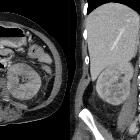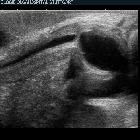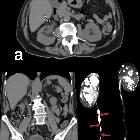vesicoureteric reflux disease (VUR)









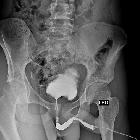

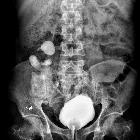












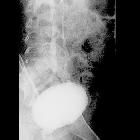










Vesicoureteric reflux (VUR) is the term for the abnormal flow of urine from the bladder into the upper urinary tract and is typically encountered in young children.
For grading of vesicoureteric reflux, please refer to vesicoureteric reflux grading.
Epidemiology
The incidence of urinary tract infection is 8% in females and 2% in males . Among children with urinary tract infections, the incidence of vesicoureteric reflux rises to ~ 25-40%.
Clinical presentation
Reflux from the bladder into the upper urinary tract predisposes to pyelonephritis by allowing entry of bacteria to the usually sterile upper tract. As such the diagnosis is first suspected after urinary tract infection in a young child.
Vesicoureteric reflux may be an isolated abnormality or associated with other congenital anomalies including:
- congenital obstructive posterior urethral membrane (COPUM)
- bulbar urethral obstruction (Cobb collar)
- ureteral partial obstruction
- duplex collecting system
Pathology
Vesicoureteric reflux is, in the majority of cases, the result of a primary maturation abnormality of the vesicoureteral junction resulting in a short distal ureteric submucosal tunnel. As a result, the normal pinch-cock action of the vesicoureteric junction when bladder pressure increases during micturition is impaired, allowing urine to pass retrogradely up the ureter.
Radiographic features
The primary diagnostic procedure for evaluation of vesicoureteric reflux is a voiding cystourethrogram (VCUG), which however requires bladder catheterization and distention of the bladder. This can cause discomfort to the patient but is usually well tolerated if patients are carefully selected and families counseled prior to the study. Patients unsuitable for the catheterization may need to undergo cystoscopy as an alternative. In addition, as it is a fluoroscopic examination it requires ionizing radiation, the dose of which varies greatly depending on the equipment and technique used.
As such other methods for assessing vesicoureteric reflux are being evaluated. These include:
However, an anatomical assessment of the vesicoureteric junction is needed to help determine the appropriate therapy.
Voiding cystourethrogram (VCUG)
Voiding cystourethrogram (also known as micturating cystourethrogram) should be performed after the first well-documented urinary tract infection up to the age of 6 years . The reporter should specifically evaluate:
- confirm the presence of reflux with grading where possible
- the occurrence of reflux during micturition or during bladder filling
- presence of associated anatomical anomalies
- length of the ureteric tunnel
- the width of the lower ureter
Ultrasound
Routine ultrasound is usually also performed (in addition to voiding cystourethrogram) to assess the renal parenchyma for evidence of scarring or anatomic anomalies.
Additionally, ultrasound has been investigated as a replacement for traditional fluoroscopic voiding cystourethrogram, by assessing the distal ureters during bladder filling, using micro-bubbles . Recent evidence has shown that contrast-enhanced voiding urosonography has a performance comparable to conventional voiding cystourethrography in the detection of vesicoureteral reflux but without the radiation exposure of the latter .
Nuclear medicine
Reflux can also be graded, although less precisely, with nuclear cystography. There is no universally accepted grading system for nuclear cystography, with most radiologists simply using the terms mild, moderate, and severe .
The advantage of nuclear cystography is the lower radiation dosage, which makes it an excellent tool for screening female patients and for following up patients of both sexes.
Disadvantages of nuclear cystography are difficulty in recognizing important associated bladder disease (e.g. bladder diverticula), difficulty in visualizing the male urethra, and lack of spatial resolution.
MRI
MR voiding cystourethrogram protocols are still being developed but have the advantage of not having ionizing radiation and of simultaneously imaging the renal parenchyma .
Treatment and prognosis
Significant vesicoureteral reflux, if untreated, may lead to recurrent urinary tract infections, renal scarring, and eventually renal failure (reflux nephropathy).
Low-grade reflux may be treated by prophylactic antibiotic treatment.
Surgical reimplantation for the treatment of higher grades of reflux is aimed at reducing the incidence of reflux nephropathy.
Endoscopic treatment, performed by injection of a bulking agent (e.g. Deflux™) at the ureterovesical junction, may be used and is variably effective in preventing sequelae of reflux .
Siehe auch:
- Pyelonephritis
- Doppelniere
- Urethralklappe
- Vesikoureteraler Reflux Gradeinteilung
- Harnwegsinfekt
- vesicoureteric reflux grading
und weiter:
- genitourinary curriculum
- fetal pyelectasis
- fetal hydronephrosis
- paediatric curriculum
- kortikale Nephrokalzinose
- kongenitaler Megaureter
- Reflux bei ektoper Uretermündung
- malacoplakia of the urinary tract
- endoskopische Injektionstherapie zur Behandlung des vesikoureteralen Refluxes
- Minimalinvasive Behandlung Vesikoureteraler Reflux

 Assoziationen und Differentialdiagnosen zu Vesikoureteraler Reflux:
Assoziationen und Differentialdiagnosen zu Vesikoureteraler Reflux:
